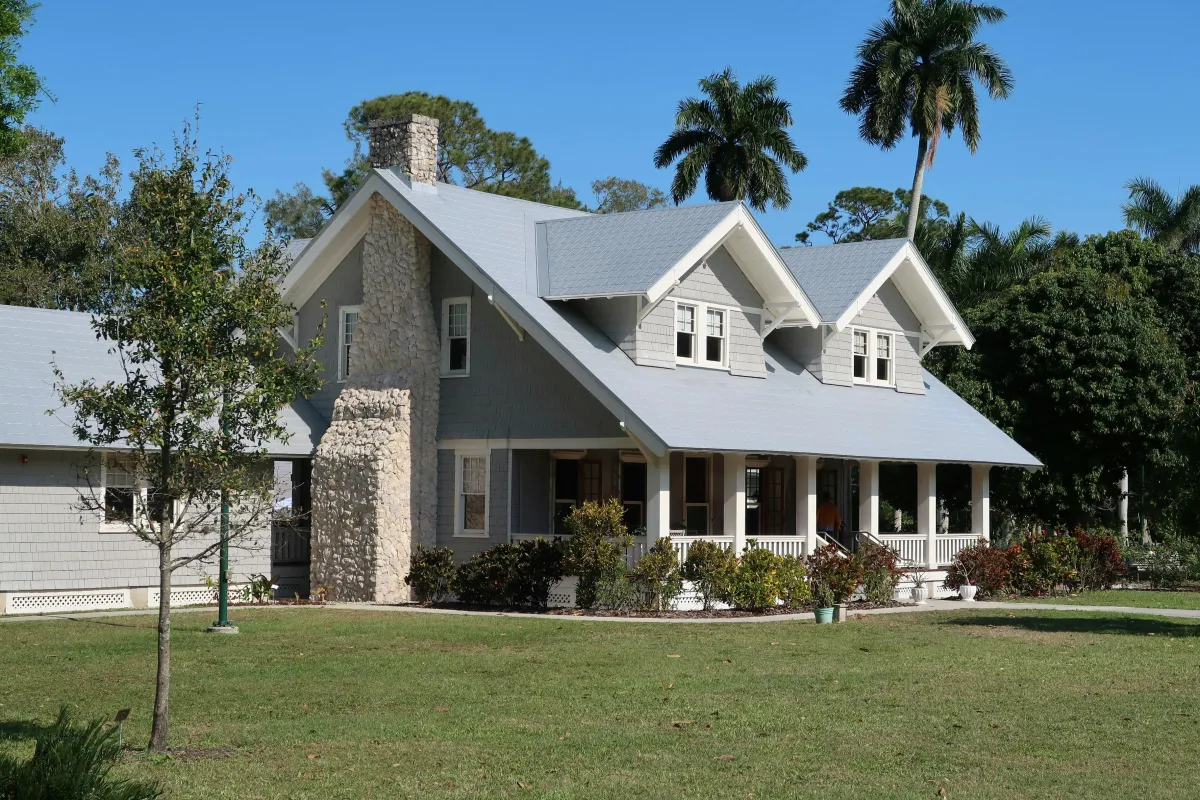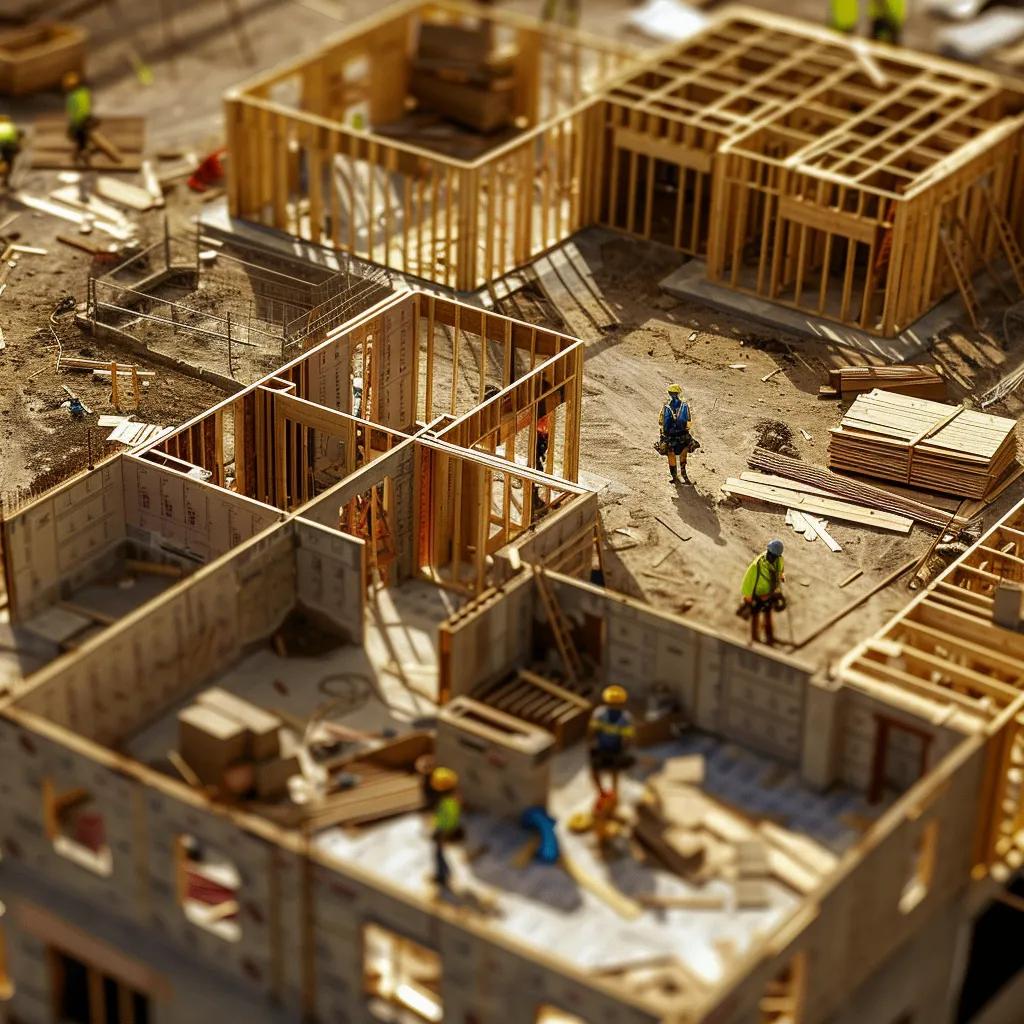
Master Budgeting for Custom House Plans: 10 Essential Tips
Planning a custom home often means balancing dreams against dollars—nearly 60% of custom builds exceed budget by 10–20%. If you’ve ever asked, “how can i manage my budget for custom house plans effectively,” this guide offers ten actionable strategies to keep costs on track. You’ll learn how to define priorities, dissect cost components, anticipate hidden expenses, choose materials and labor wisely, secure the right financing, select a builder who partners on budget control, monitor spending in real time, know when to compromise, and tap expert guidance to avoid costly missteps.
How Can You Define Your Vision and Priorities to Control Your Custom Home Budget?

Defining your vision and priorities means clarifying which design elements are essential and which are optional to align your custom home goals with realistic spending limits. This process guides every decision—from layout to finishes—ensuring resources focus on what matters most and preventing budget creep. For example, choosing a simple roofline can free funds for higher-grade flooring where it counts.
What Are the Must-Have Features Versus Wants in Your Custom House Plan?
Categorizing each element as a need or a want creates a transparent roadmap for cost allocation, enabling you to fund critical spaces first and layer in extras only if the budget allows.
Prioritizing core features ensures that the fundamental functionality and comfort of your home remain intact even if you scale back on secondary elements.
How Does Home Size and Layout Impact Your Budget?
Home size and layout directly influence material quantities, labor hours, and energy costs by dictating square footage and complexity of design. A compact footprint minimizes foundational and framing expenses, while efficient room adjacencies reduce corridor and utility runs.
Square Footage Scaling – Every extra 100 ft² adds proportionate costs for site work, foundation, and framing.
Open-Concept Versus Walled Rooms – Open plans can lower interior wall expenses but may require beefier structural supports.
Complex Shapes – Bay windows, multiple rooflines, and angled walls increase labor rates and waste materials.
Optimizing size and flow early prevents expensive redesigns later and keeps overall costs aligned with your financial plan.
What Are the Key Cost Components to Understand in Custom Home Construction?

Understanding cost components means breaking down the total project price into site work, structure, finishes, and professional fees so you can allocate funds accurately. This clarity empowers informed trade-offs and prevents surprises when invoices arrive.
How Are Construction Costs Broken Down: Site Work, Foundation, Framing, and Finishes?
A granular breakdown highlights where most dollars are spent and where value engineering can deliver savings without compromising quality.
This breakdown reveals that interior finishes and systems roughly half of your spend, encouraging you to explore alternative materials or streamline layouts to maintain quality while controlling cost.
Construction Cost Breakdown
Construction costs are typically broken down into several key areas, with interior finishes and major systems often representing a significant portion of the overall budget. Understanding these percentages can help homeowners make informed decisions about where to allocate their funds and potentially find cost savings without sacrificing quality.
National Association of Home Builders, Cost of Construction Report (2024)
This citation supports the article's breakdown of construction costs, providing a credible source for the typical percentages associated with each stage of construction.
What Professional Fees Should You Expect for Architects and Builders?
Architects and builders charge fees that reflect design complexity, project scope, and local market rates, typically accounting for 10–15% of total construction costs.
Architect Fees – Range from 5–10% for custom design services, including drawings and permit documents.
Builder Overhead & Profit – Average 8–12%, covering project management, supervision, and business expenses.
Consultant Fees – Structural engineers, surveyors, and energy modelers often add 1–3% combined.
Budgeting for these professional services upfront prevents underestimating soft costs and ensures the design-to-build team stays aligned.
How Can You Account for Hidden and Unexpected Expenses in Your Budget?

Accounting for hidden costs means researching permit requirements, utility hookups, and site-specific challenges that often slip under the radar. Accurate forecasting builds resilience into your budget and avoids last-minute funding gaps.
What Are the Typical Hidden Costs: Permits, Utilities, and Landscaping?
Even minor fees accumulate—permit and inspection charges, utility connection deposits, and mandatory landscaping can add 3–6% to your total budget.
Local Permits & Inspections – Zoning variances, building permits, impact fees.
Utility Hookups – Water, sewer, gas line extensions, septic systems.
Site Preparation & Landscaping – Retaining walls, driveways, irrigation, planting.
Identifying these fees early keeps your financial plan comprehensive and reduces the risk of de-scoping crucial exterior elements later.
Why Is Building a Contingency Fund Crucial for Your Custom Home Budget?
A contingency fund cushions against unforeseen expenses by setting aside 5–10% of construction costs, preserving project scope when change orders or market fluctuations occur.
Including a contingency ensures that surprises—like soil remediation or material price spikes—don’t derail your vision, and it signals to your builder that you’re prepared for adjustments without delay.
Contingency Funds in Construction
A contingency fund is crucial for managing unforeseen expenses during a custom home build. Setting aside a percentage of the construction costs helps to mitigate risks associated with unexpected issues such as material price increases or site problems, ensuring the project stays on track.
Construction Financial Management Association, Construction Budgeting and Cost Control (2023)
This citation reinforces the importance of a contingency fund, aligning with the article's advice on managing unexpected costs and maintaining budget control.
How Do You Manage Change Orders to Avoid Budget Overruns?
Establishing a formal change-order process with clear documentation, approval thresholds, and cost tracking keeps scope adjustments controlled and transparent.
By requiring signed authorizations before work begins and updating your budget spreadsheet immediately, you maintain real-time visibility into cumulative impacts and avoid drifting past funding limits.
How Do Smart Material and Labor Choices Affect Your Custom Home Budget?

Selecting cost-effective materials and understanding labor dynamics means balancing upfront savings with long-term value, ensuring you invest where it matters most and streamline expenses elsewhere.
How Can You Balance Quality and Cost When Selecting Building Materials and Finishes?
Value engineering identifies high-impact areas—like cabinetry or flooring—where premium materials pay dividends and suggests cost-savings alternatives for less critical zones.
High-Traffic Surfaces – Invest in durable hardwood or tile where wear is greatest.
Secondary Bathrooms & Closets – Choose engineered wood or vinyl plank to reduce costs by 20–30%.
Exterior Siding – Fiber-cement offers longevity similar to brick at lower installation rates.
This targeted approach preserves aesthetic and performance priorities while trimming overall material spend by up to 10%.
What Should You Know About Labor Costs and Builder Markups?
Labor rates vary by trade, region, and project complexity; understanding typical hours and markup percentages helps you evaluate bids and negotiate transparently.
Framing & Carpentry – $6–10 per ft² of framing area, with 10–15% markup.
Trades Rough-In – Plumbers and electricians often bill 15–20% markup on labor.
Finishing Trades – Painting, flooring, and cabinetry install markups range 20–30%.
Comparing line-item estimates and asking builders to itemize markup clarifies where savings can be realized without sacrificing craftsmanship.
Are There DIY-Friendly Options to Save on Your Custom Home Build?
Owner-provided installations—like painting, landscaping, or minor tile work—can save up to 15% on labor costs when properly scheduled and supervised.
Weekend Painting – Completing paint on walls and trim before finish carpentry.
Landscaping Planting – Installing shrubs and sod after hardscape is done.
Low-Skill Finishes – Laying peel-and-stick vinyl in closets or pantries.
Engaging in DIY tasks strategically reduces out-of-pocket expenses while preserving your builder’s focus on critical trades.
What Financing Options Are Available to Support Your Custom Home Budget?

Exploring financing options means matching loan structures to your cash flow and project timeline so you can manage draw schedules and interest accrual effectively.
How Do Construction Loans Work for Custom Home Builds?
Construction loans provide short-term financing during the build phase, disbursing funds in draws tied to construction milestones and converting to permanent financing upon completion.
How Can Long-Term Value and Energy Efficiency Influence Your Budget?
Investing in energy-efficient systems—such as high-performance windows or geothermal HVAC—raises upfront costs by 2–5% but lowers operating expenses by 15–30% annually.
By quantifying projected utility savings and incorporating life-cycle cost analysis, you can justify premium selections that pay back your investment over time while enhancing resale value.
How Can You Choose the Right Builder to Help Manage Your Budget Effectively?
Selecting a builder skilled in cost control and transparent communication means partnering with a professional who prioritizes your financial goals as much as quality craftsmanship.
What Role Does a Qualified Builder Play in Budget Control?
A builder with established processes for cost tracking, competitive subcontractor bids, and proactive value-engineering recommendations serves as your steward throughout construction.
This collaboration ensures early identification of cost drivers, swift responses to scope changes, and disciplined management of allowances to protect your bottom line.
How Should You Understand Builder Contracts and Profit Margins?
Reviewing contract terms—such as fixed-price versus cost-plus agreements—and dissecting margin percentages clarifies risk allocation and incentivizes on-budget performance.
Negotiating a Guaranteed Maximum Price agreement with clear allowances and shared savings clauses aligns your builder’s interests with minimizing costs and maximizing quality.
How Can You Monitor Your Custom Home Budget Throughout the Building Process?

Ongoing budget management is the practice of continuously monitoring and controlling project expenditures, comparing actual spending against your initial forecasts at every key milestone. This proactive approach ensures that no line item drifts unchecked, allowing you to quickly spot variances, address potential overruns before they escalate, and reallocate resources where necessary. By maintaining this vigilant oversight, you protect the project’s financial integrity and keep it firmly aligned with both budgetary and strategic goals.+
What Are Best Practices for Tracking Expenses During Construction?
Implementing a centralized budget spreadsheet or project-management platform with draw schedules, invoices, and contingency balances provides real-time visibility into cumulative spending.
Regularly updating line items after each inspection or purchase meeting prevents lag and keeps stakeholders aligned on financial status.
How Do You Handle Change Orders to Keep Your Budget on Track?
By establishing change-order thresholds—such as requiring owner approval for any adjustment over a set dollar amount—you maintain control over cost impacts and sequencing.
Documenting each revision in writing, attaching cost breakdowns, and updating your master budget tool immediately ensures you never lose sight of total expenses.
When Should You Consider Compromising to Stay Within Your Custom Home Budget?

Strategic compromises are about making intentional, informed trade-offs — choosing to forgo or scale back on lower-value upgrades in order to invest in enhancements that offer equal or greater functional and aesthetic benefits. This approach allows you to preserve the overall quality, durability, and appeal of the project while ensuring spending stays within budget. By prioritizing improvements that deliver the most impact for the least cost, you can achieve a balanced outcome that feels high-end without overspending.
How Do You Prioritize Needs Over Wants Without Sacrificing Quality?
Focusing on longevity and functionality means investing in core systems—roof, insulation, mechanicals—while deferring high-end finishes that can be upgraded later as funds allow.
This approach secures your home’s performance envelope and offers flexibility to enhance cosmetic elements in a second phase.
What Are Effective Strategies for Value Engineering Your Custom House Plans?
Value engineering reviews design elements holistically, substituting similar materials or simplifying structural details to achieve cost reductions of 10–20% without compromising aesthetics or function.
Techniques include replacing custom millwork with semi-custom options, standardizing window sizes, and choosing engineered trusses over handcrafted rafters.
How Can You Use Expert Guidance to Improve Your Custom Home Budget Management?

Tapping into professional insight involves more than just asking for opinions — it means actively leveraging the expertise of a well-rounded network of architects, contractors, and financial advisors. These professionals bring specialized knowledge that can help refine cost estimates with greater accuracy, validate critical assumptions before they become costly mistakes, and optimize budget allowances to ensure every dollar is allocated effectively. By drawing on their combined experience, you gain a stronger foundation for decision-making, reduce the risk of unforeseen expenses, and set your project up for long-term success.
Why Book a Free Consultation with a Qualified Builder?
A free consultation connects you with experienced builders who analyze your preliminary plans, identify cost drivers, and propose tailored strategies to align your vision with budget constraints.
How Does Expert Guidance Help Avoid Budget Mistakes?
Expert advisors draw on project data and market trends to flag unrealistic allowances, hidden fees, and design complexities before they become costly change orders, safeguarding your financial plan.
Partnering with a trusted resource ensures you gain clarity on true costs and streamlined processes that support on-budget delivery.
From defining clear priorities to engaging professional support, these ten strategies create a structured path for managing financial risks and achieving your custom home dreams. Ready to safeguard your budget and streamline planning? Book a free consultation through Custom Builder Connection and connect with a builder who treats your dollars as carefully as you do.


